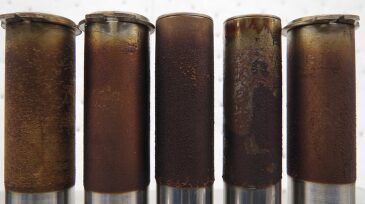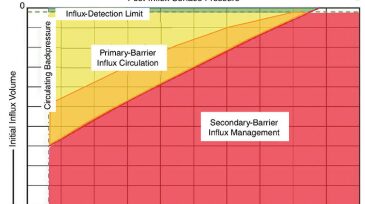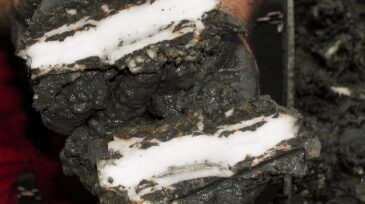Flow assurance
This paper discusses a comprehensive hybrid approach that combines machine learning with a physics-based risk-prediction model to detect and prevent the formation of hydrates in flowlines and separators.
This paper explains that the discovery of specific pressure trends, combined with an unconventional approach for analyzing gas compositional data, enables the detection and prediction of paraffin deposition at pad level and in the gathering system.
This paper presents an approach to subsea hydrate-risk management based on the understanding that some crudes have induction properties that delay hydrate formation even when the pressure and temperature conditions reach the hydrate thermodynamic region.
-
This paper presents a case study that is an example of how reassessing a flow-assurance risk-management strategy for operating assets can identify opportunities for optimization.
-
These balls have the potential to alter how pipeline inspections are done, and a consortium of pipeline operators and industry experts in North Dakota is examining just how well this emerging technology can handle the small-diameter pipelines in the area.
-
Cold finger tests are a standard method for testing paraffin inhibitors, but there is no standard testing protocol, and sometimes different labs can see inconsistent results. Shell and BHGE studied the root causes of these issues.
-
The influx-management-envelope (IME) concept is an advanced, innovative way to assess influx conditions in managed-pressure-drilling (MPD) operations, offering an improved tool for the decision-making process.
-
Offshore project execution enhancement ideas are highlighted for debottlenecking, gas-hydrate-induced pipeline vibration, and the design of subsea systems for efficient startup.
-
A computational fluid dynamics model is proposed to analyze the effect of hydrate flow in pipelines using multiphase-flow-modeling techniques. The results will identify the cause of pipeline failure, regions of maximum stress in the pipeline, and plastic deformation of the pipeline.
-
The 9th International Conference on Gas Hydrates featured discussions on key advancements in flow assurance, including the concept of risk management and anti-agglomerates being applicable strategies in transient operations.
-
In this study, the effects of the hydrodynamic parameters are decoupled with specially designed flow-loop experiments. The results enhance understanding of the deposition behavior at various hydrodynamic conditions and aid in scaling up from laboratory to field conditions.
-
In this study, two coatings were produced and evaluated to determine their effect on hydrate adhesion onto carbon-steel surfaces.
-
This paper presents the traditional methods of hydrate mitigation used in the NKJ fields and the way in which a transient model was initially built and continuously improved.













